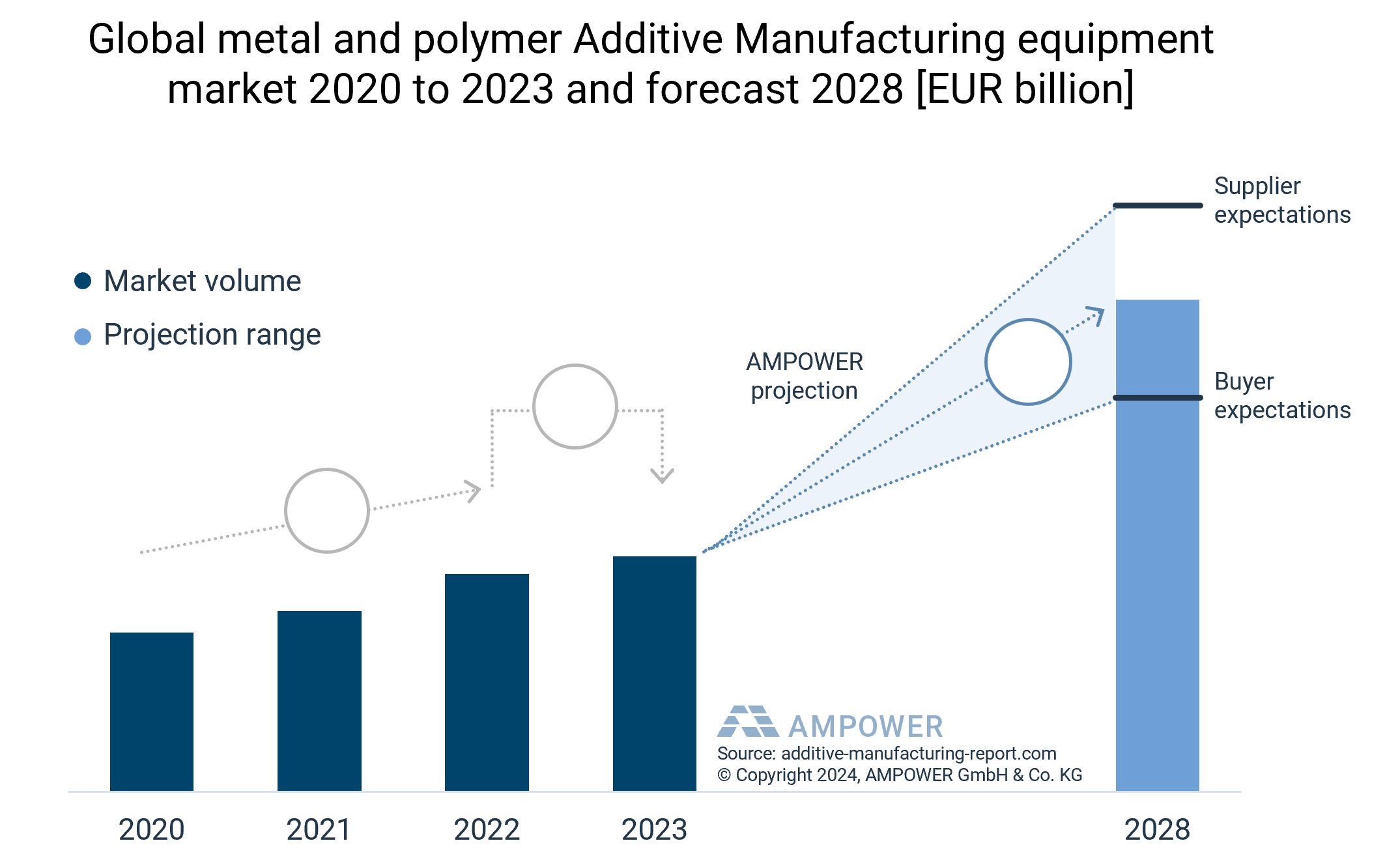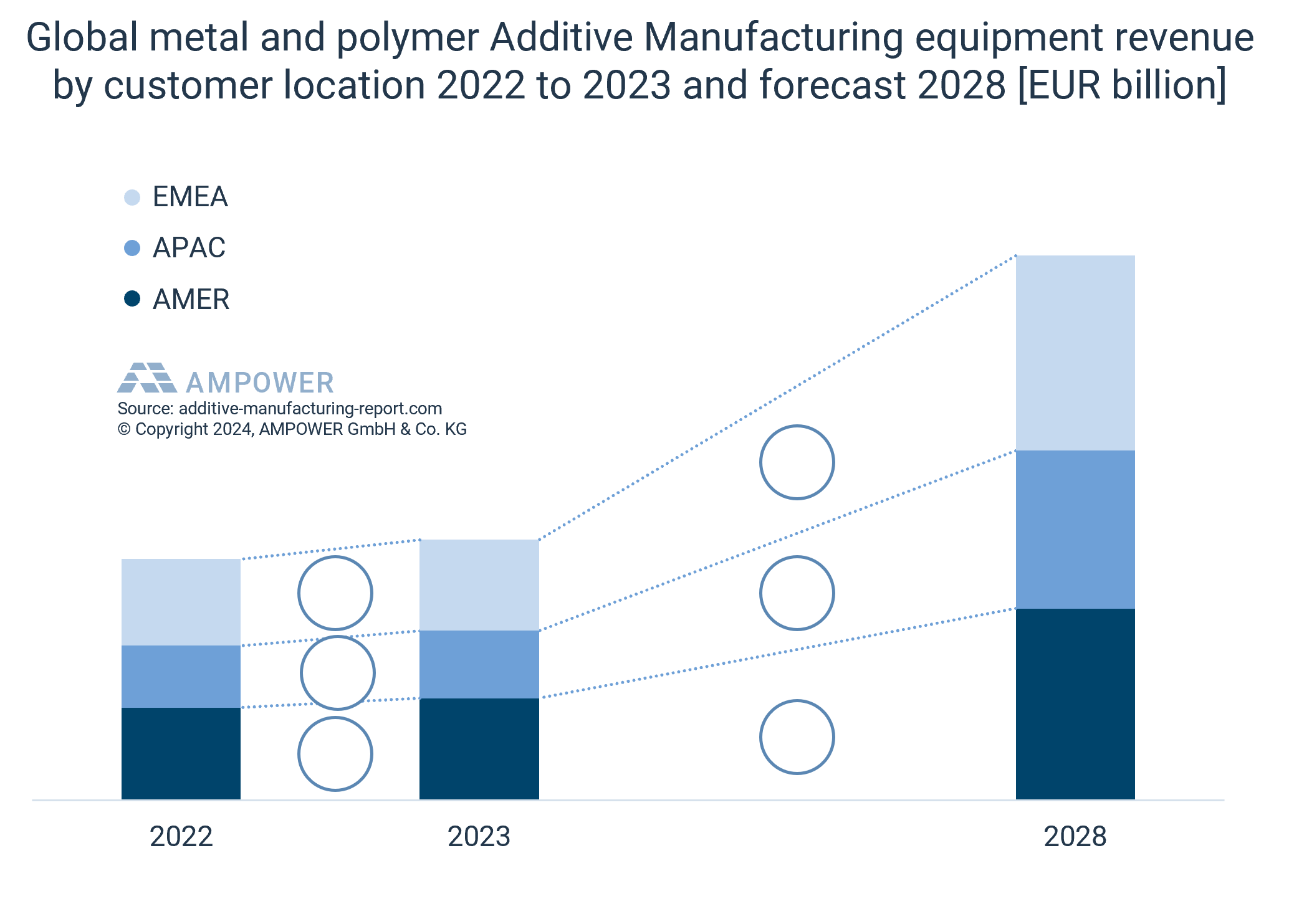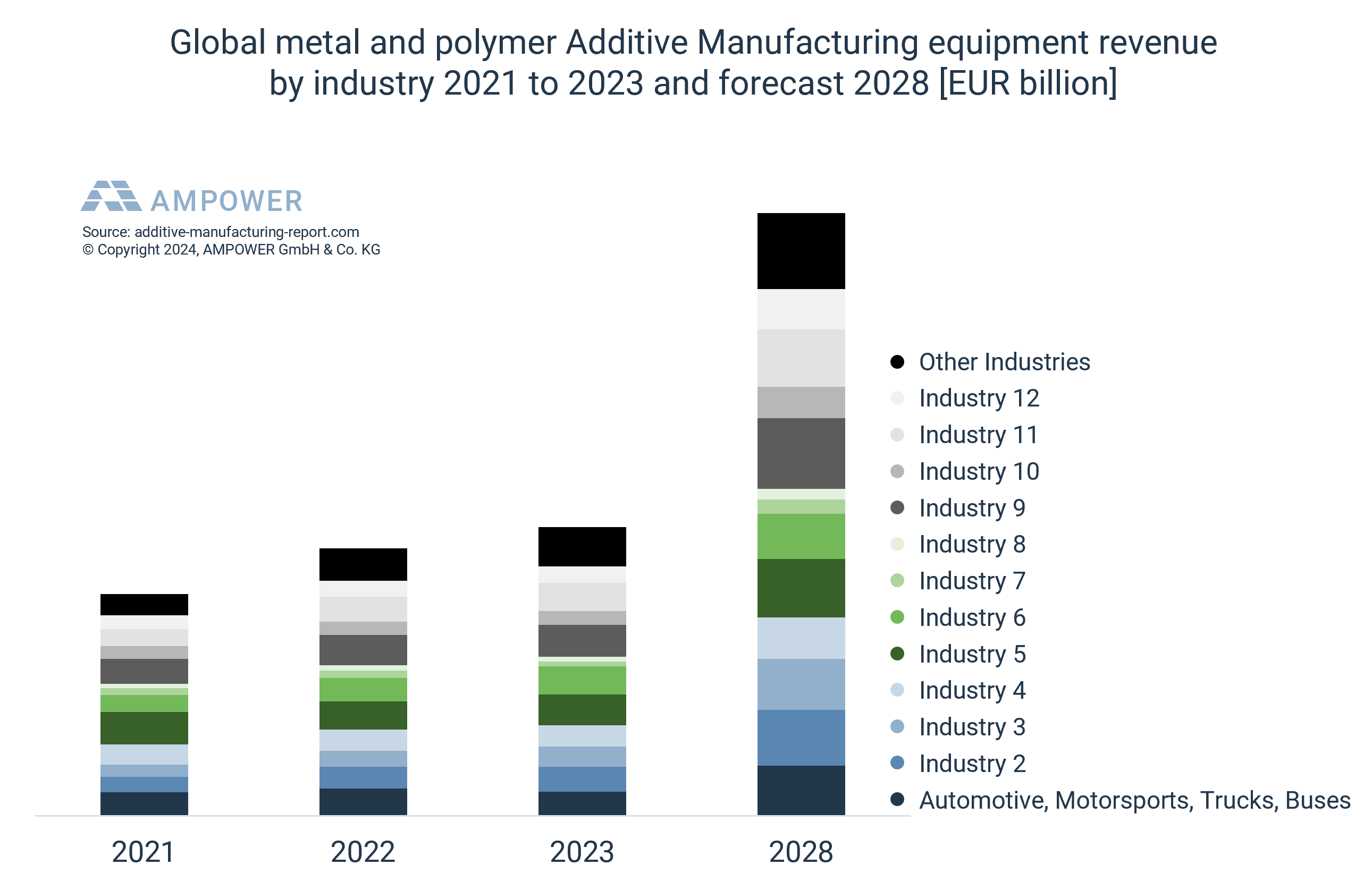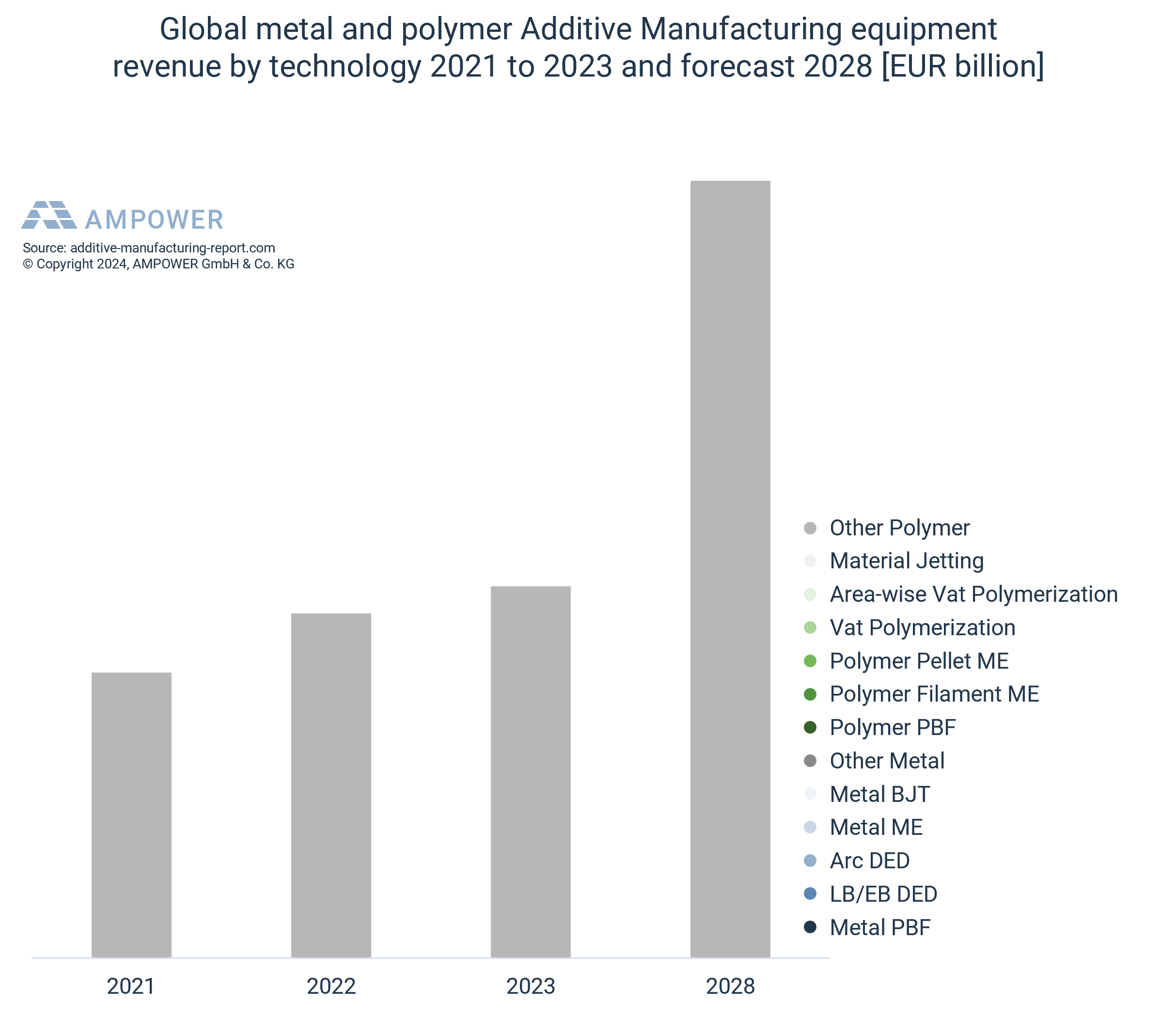For high-end polymer Additive Manufacturing methods like Selective Laser Sintering and MultiJet Fusion, the pricing for commonly utilized materials PA12 levels out between 459 to 561 EUR/kg. For TPU, the pricing for Selective Laser Sintering is more expensive at 843 vs. MultiJet Fusion with 534 EUR/kg.
Material Extrusion ABS components demonstrate market pricing stabilization at 289 EUR/kg, exhibiting a range spanning from 127 to 651 EUR/kg. Unlike MJF and SLS methods, Material Extrusion displays a notably wider pricing range for single parts. This variation in prices can be attributed to significant disparities in printer costs among suppliers. Some base their calculations on industrial-grade equipment with investments exceeding EUR 100,000, while others rely on semi-professional desktop printers requiring investments below EUR 10,000. While these distinctions may affect part quality, they are often concealed from the customer’s view. In numerous applications, lower-cost machines are anticipated to yield satisfactory Material Extrusion ABS quality. Furthermore, technology-specific printing parameters, such as infill and other variables, differ among suppliers and are frequently undisclosed to marketplace users.
Remarkable regional price discrepancies are apparent in online marketplaces. Suppliers situated in China offer the most competitive price per kilogram for Selective Laser Sintering components. Intriguingly, when procured from Chinese marketplaces, TPU parts generated via MJF machines carry the highest cost.
Across all technologies and materials, the analysis underscores that exceptionally small parts, approximately 10 mm in size, incur considerably higher expenses compared to those exceeding 20 mm. Even with increased manufacturing volumes, the pricing for very small parts remains relatively high, likely due to heightened handling costs per unit.






![g24_Metal L-PBF part manufacturing market pricing by material and order volume 2023 [EUR per kg]](https://additive-manufacturing-report.com/wp-content/uploads/2024/03/g24_Metal-L-PBF-part-manufacturing-market-pricing-by-material-and-order-volume-2023-EUR-per-kg.png)
![g24_Polymer part manufacturing market pricing by material, technology and order volume 2023 [EUR per kg]](https://additive-manufacturing-report.com/wp-content/uploads/2024/03/g24_Polymer-part-manufacturing-market-pricing-by-material-technology-and-order-volume-2023-EUR-per-kg.png)